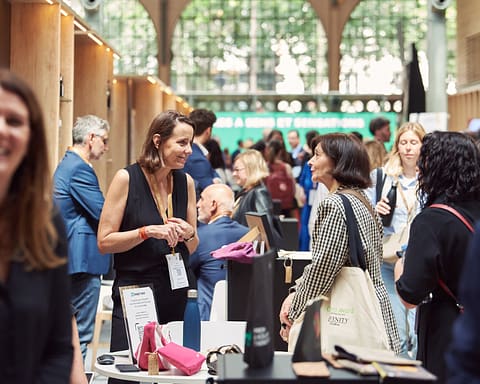Annie-Paule Quéré is a brand identity and strategy consultant and founder of L’Atelier de la Marque. She assists managers in the development and updating of heritage brands as well as in the creation of brands based on excellent know-how. In the first part of her article, entitled “Brands, cultivate your signs! By Annie-Paule Quere (1/2) “, Annie-Paule goes back over the origin and the meaning that a sign can give to a brand. In this second part, she explains the importance of preserving the signs, which are a lever for branding and strengthening attachment to the brand.
By Luxus Plus
Signs tell great stories
They serve the story-telling, feed the legend. Take three brands associated with animals.
The bee – Guerlain
The golden bees are a heraldic symbol of the Empire. They speak of immortality and resurrection. Gold bees were discovered in the tomb of Childéric, 1st king of the Merovingian dynasty and father of Clovis. By choosing them as a symbol, Napoleon linked the Empire to the origins of France.
In 1853, Pierre-François-Pascal Guerlain created the Eau de Cologne Impériale for Eugénie, while she married Napoleon III. The bottle is decorated with golden bees, its coat of arms. Guerlain is appointed Official Perfumer. Water and its bottle will cross time, bestsellers, iconic and the bee becomes the sign of the House.
Cartier – The panther
It appeared for the first time at Cartier in 1914. By evoking its coat on a wristwatch paved with diamonds and onyx, with a spotted pattern.
In the 1920s, the feline was declined flat on small accessories such as cigarette cases. It was then in vogue with sculptors and designers eager for the exotic. In 1948, Jeanne Toussaint, Artistic Director of the brand, created the first jewelry panther, in volume, for the Duchess of Windsor.
It is an emerald brooch topped with a gold panther, followed by a second panther the following year, in platinum, diamond and sapphires mounted on a cabochon sapphire.
Success with clients. Independent, elegant and dangerous, the panther fascinates and seduces women in full assertion. She imposes herself as Cartier’s favorite animal. Jeanne Toussaint was herself nicknamed the panther …
Lacoste – The crocodile
Boston, 1923, Davis Cup tournament. René Lacoste strolls around town before a match and falls in awe of a crocodile suitcase displayed in a shop window. His team captain motivates him: “If you win the match, I offer you this suitcase”.
Lacoste loses the match. George Carens, a reporter for the Boston Evening Transcript, recounts the meeting and writes: “The young Lacoste has not won his crocodile skin suitcase but he fought like a true crocodile. “. The nickname remains, it suits the tenacious personality of the player.
His friend Robert George draws a crocodile that René has embroidered on his blazers. When he created his brand in 1933, the fetish animal quite naturally became his sign, displayed on the polo shirts.
Signs stimulate creativity and make up consistent branding
Here is a case study. The brand: Hermès. The sign: the horse. Hermès never forgets its raison d’être and its origins as a saddler.
The horse is an anchor, a leitmotif, an inexhaustible source of inspiration for creation, development and communication. He builds a brand true to its roots, authentic, consistent in its diversity, with a unique imagination. Hermès declines and explores its sign:
– in its logo
– in the design of his creations: sewn saddlery in leather goods, equestrian patterns on scarves or tableware, stirrup shapes in watch design …
– in the naming: Horse-drawn carriage, Amazon, Gallop, Dressage, Grand Manège …
– in its communications: advertising campaigns, films on the horse / rider duo, Saut d’Hermès event, exhibitions …
– in visual merchandising. Especially in the staging of shop windows, as below in Paris.
From branding … to co-branding. The marriage of signs and their reinterpretation by the other is a great spring of brand collaborations. Fendi and Fila have merged their logos for a capsule collector collection. Lacoste replaced his crocodile with endangered species during the “Save the species” operation in partnership with the IUCN. Dom Perignon collaborates with artists to reinterpret his bottle.
Signs strengthen brand attachment
They act as a totem, activate the brand-customer bond and the brand community. With multiple variants possible.
In fashion and accessories, the sign can become a rallying sign. Supreme logo, GG and Gucci web band, Nike swoosh … We pride ourselves on it, on the street or on Instagram. The community takes it over, so much so that sometimes a brand even has trouble changing its sign (case of the Gap logo).
Other brands prefer to distill their signs. Subtly, by clues that invite decryption. For example, Bvlgari and the Serpenti clasp of its bags, a nod to the House’s jewelry codes. The customer can read and appreciate the reference, the novice must be initiated. The brand produces a club effect.
When a brand plays with signs, the community is ready to play with it. Born in 1717, Fauré Le Page produced weapons and hunting articles. It revived in 2011 in the leather goods market by transposing its heritage in a playful way, with a slogan “armed to seduce”, a quirky universe built around weapons and wild animals and a very complicit communication. The community is ready to play.
































